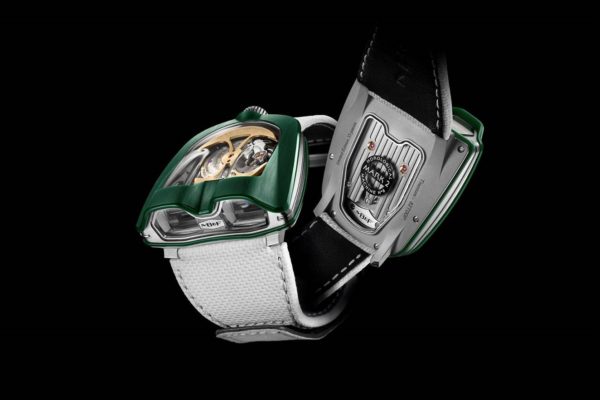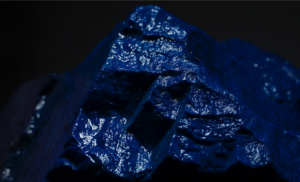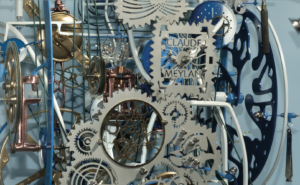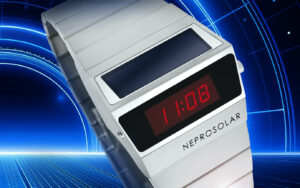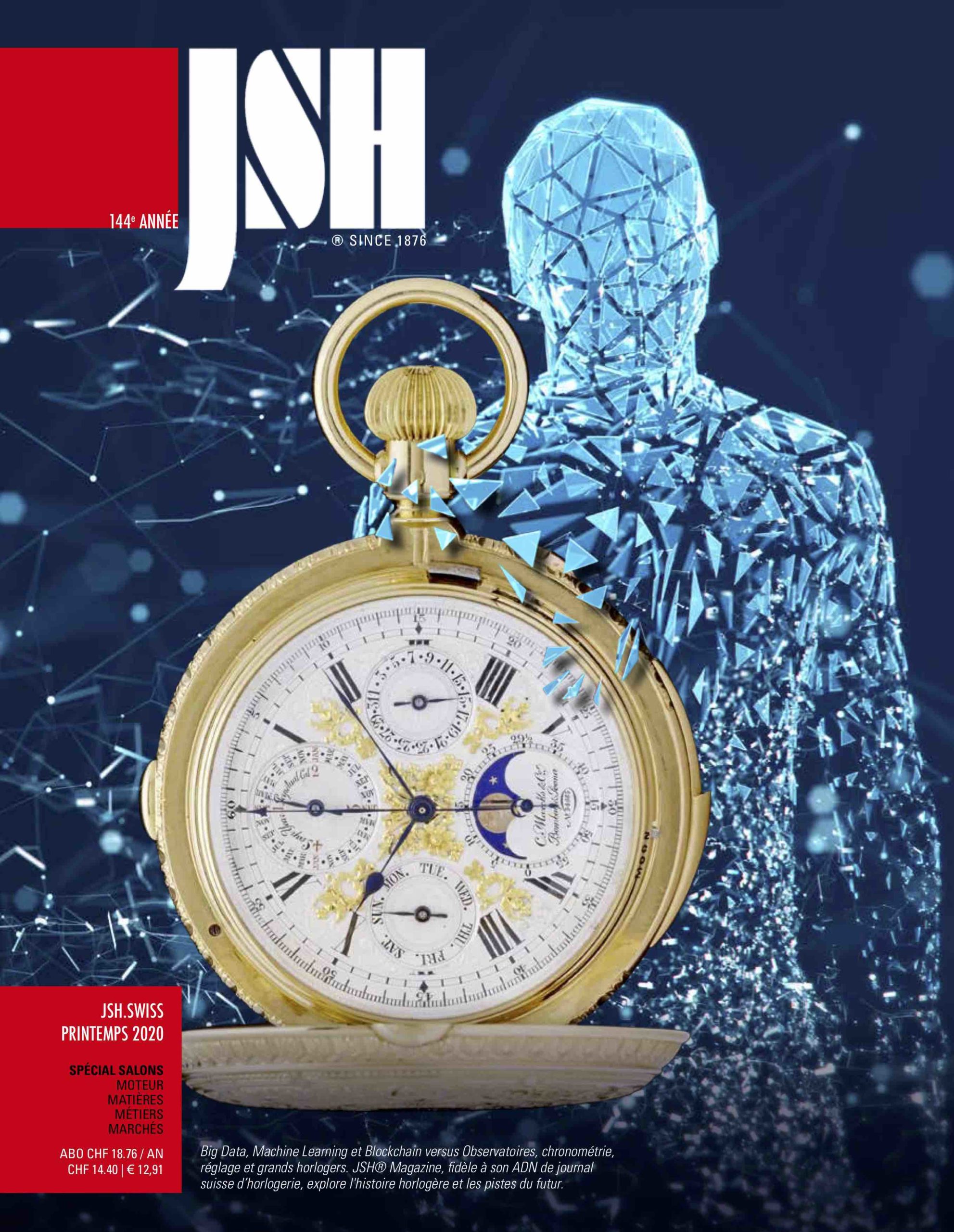MB&F’s connection to cars runs deep, starting in 2012 with the HM 5, followed by the HMX in 2015, and the HM 8 in 2016. Each of these iterations is linked by its instantly recognizable speedometer-style display on the side of the case that recalls the daring and futuristic design of the 1970s.
Une sélection de Shaniah Asha Gibson / @TRP, Public Relations Cabinet
Insta | Linkedin | Facebook | Insta JSH | Insta SWP | S’abonner à JSH
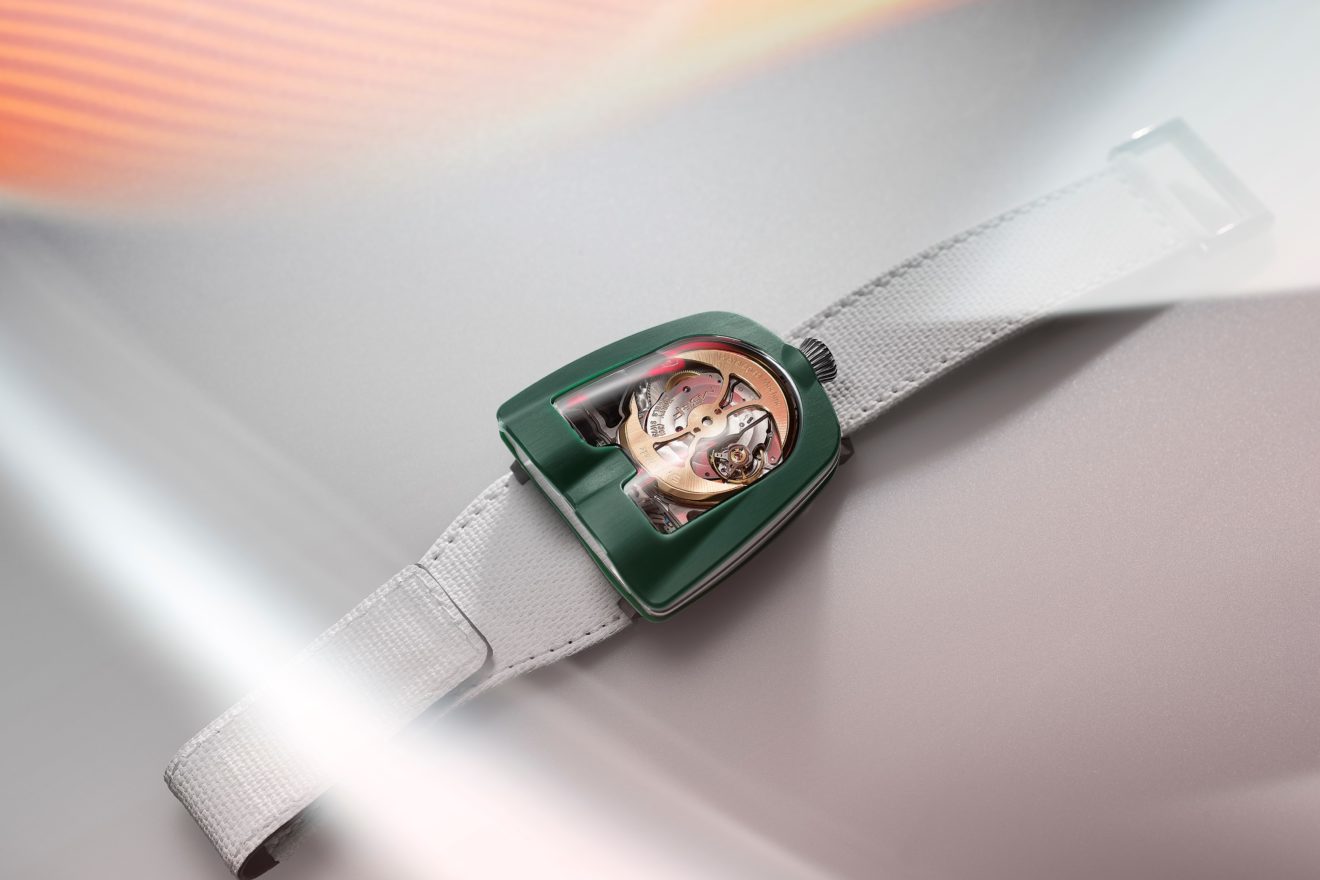
The initial dream
To fully understand MB&F’s link to the car world, we need to step back in time to 1985 for a moment. As children, we all have dreams, some of them come true, others get abandoned along the way, and some are so part of who we are that they end up happening despite us. This was the case with MB&F’s Founder Maximilian Büsser, who spent the majority of his childhood dreaming about becoming a car designer. He was so smitten with the idea that from the age of 4 to 18, cars were the only thing he would sketch and draw. When his classmates started discovering other areas of interest, his heart remained steadfastly loyal to the automobile with its aerodynamic lines and sleek forms.
Just before graduating from high school, he learned that the world-famous ArtCenter College of Design from Pasadena, was opening a campus in Europe, and not just in Europe, but in La Tour-de-Peilz, a stone’s throw from his childhood home. Could this be a sign? He could hardly contain his excitement until he discovered that the school fees were CHF 50 ,000, a huge amount of money today, and an even more colossal sum back in 1985.
Knowing how much he loved cars, his parents said they would find a way – but Maximilian knew that it would be too much for them. So as everyone keeps telling him he would make a very good engineer as he was so good at maths, he signed up for the Swiss Federal Institute of Technology Lausanne (EPFL), and that could have been the end of the story, only it wasn’t.
Maximilian Büssser: “I lost my way, I lost my marbles, and ended up in the watchmaking industry… So, when I decided to tackle car design in a timepiece, this was humungous for me. It was everything I had ever dreamed of.”
Playing with prisms
He found inspiration in a crazy design by Amida, called the Amida Digitrend, a watch that was unveiled in 1976, just before the company went bankrupt. Working on a similar idea, MB&F employed a sapphire prism that would allow the jumping hours and sweeping minutes to be indicated vertically, when they were actually flat as a pancake on top of the movement. The time was indicated in a window that resembled an old-style speedometer on the front of the case that could also be easily viewed while driving, no less. Unlike the Amida, with its discs next to each other, the MB&F HM design features discs that are one on top of the other, maximising the size of the digits and therefore the legibility.
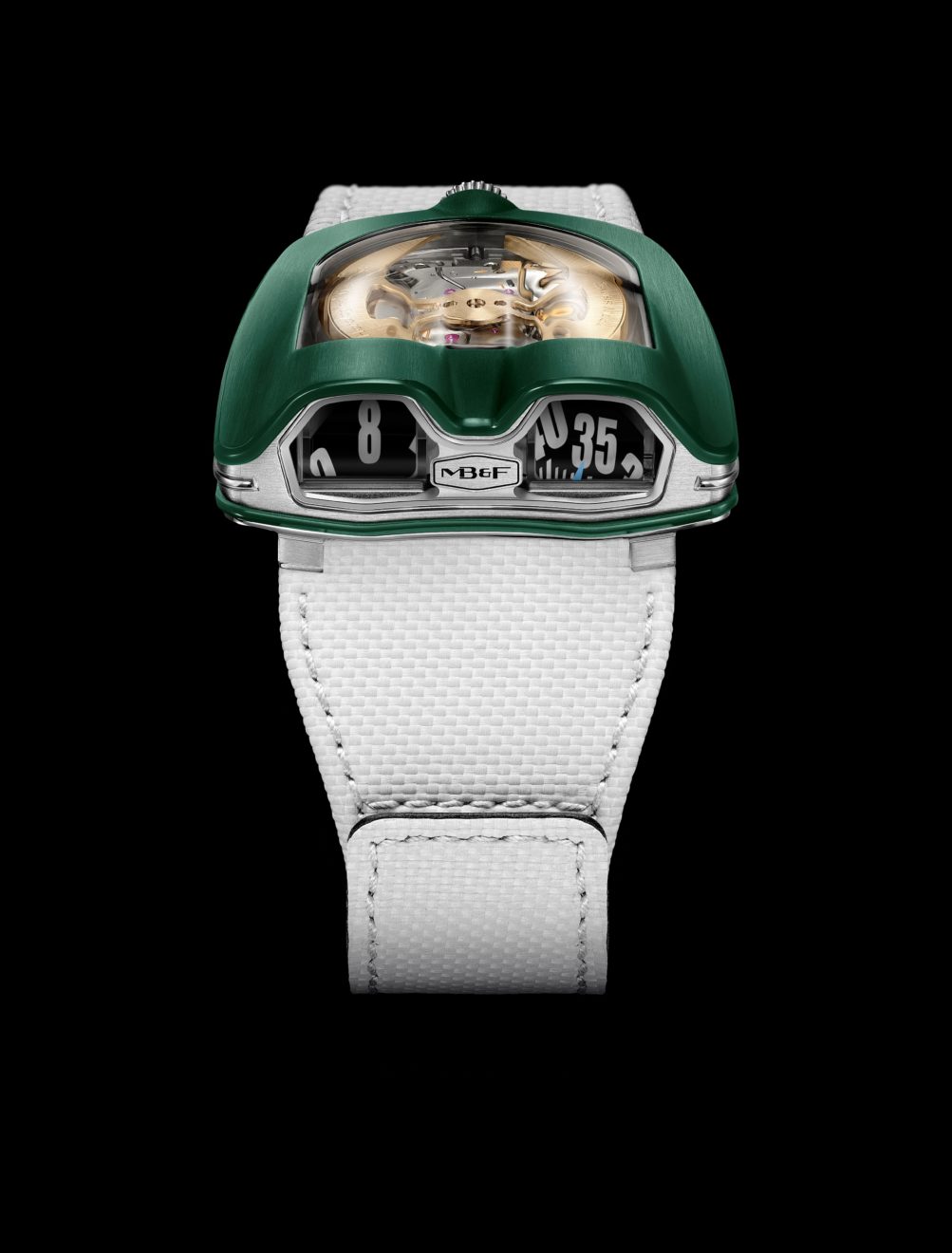
The idea didn’t end there, as the mission was to make the numerals look almost digital or electronic. This was achieved using sapphire disks that were coated with a black metallization, leaving the numerals clear. Super LumiNova® was then added underneath the sapphire disc, so that the luminescence would be completely flat, not bulbous as it appears when it is applied to the dial. It is interesting to note that the numerals had to be created back-to-front as they get reversed in the prism.
This system came to life in the HM 5 with opening and closing slats that allowed the light into the movement to charge the luminescence. These slats were inspired by Marcello Gandini’s design for the Bertone Lamborghini Miura with its louvers on the rear window that gave the car its futuristic aesthetic.
These slats were dropped in the following model – the HMX – in favour of a sapphire crystal cover that gave a partial view on the engine beneath. This piece was inspired by another Italian coach builder – Touring Superleggera – and was equipped with miniature oil caps that could be unscrewed and filled with watch-making oils
Next came the HM 8 ‘Can-Am’ with a sapphire crystal that also allowed a view on the spinning rotor. It was this movement, based on a Girard-Perregaux calibre, that is also providing the base for the brand-new HM 8 Mark 2. The HM 8 took its design cues from Can-Am cars (hence the nickname) from the famous Canadian American Racing Championship. The cars’ unusual design and distinctive roll bars became the inspiration for the watch’s two titanium roll bars.
The HM 8 Mark 2, on the other hand, with its distinctive “double bubble” sapphire crystal, finds inspiration in the design of some of the most iconic supercars.
A chassis construction
Not only did the design codes of these timepieces find their inspiration in the automobile world, but the construction did too. That engineering degree was not wasted on Maximilian after all! The HM 5 and HM 8 Mark 2 are built from an independent water-resistant chassis to which the body panels of the watch are added, while the HMX and HM 8 favoured a monobloc construction.
For the new HM 8 Mark 2, this coachwork comes in a choice of white or British racing green CarbonMacrolon® that has a matt finish on the top and a high polish on the sides. The white version is paired with a green CVD rotor and light green minute markers, while the British racing green version comes with a red gold rotor and balance wheel and turquoise minute markers and is limited to 33 pieces.
Carbonmacrolon®
Developed specifically for MB&F, CarbonMacrolon® is a composite material composed of a polymer matrix injected with carbon nanotubes, which add strength and rigidity. Carbon nanotubes offer superior tensile strength and stiffness than traditional carbon fibre reinforcing. MB&F’s CarbonMacrolon® is a solid material that is hard and can be coloured, polished, beadblasted, lacquered, satin-finished… In addition to all these attributes, it weighs eight times less that steel, making it extremely versatile and interesting from both a technical and design point of view.
Under the hood
Like any super- or hyper-car, a lot of the technology inside the HM 8 Mark 2 is not visually obvious, starting with the titanium chassis, which is extremely complicated to mill. Even in stainless steel, it would have been extremely complex to make, but the hardness of this alloy really put MB&F’s technicians to the test.
The same is true of the CarbonMacrolon® body panels, which due to the small production quantities, could only be milled from a block, adding another layer of complexity to the watch’s coachwork.
A long line of MB&F timepieces has pushed the limits of what is physically possible in terms of sapphire crystal production, and the HM 8 Mark 2 is no exception. The creation of this double-curved sapphire has reached a complexity that is 30 to 40 times more expensive than a dome sapphire. Only one supplier agreed to take on the challenge. During the many hours required to produce each sapphire crystal, the risk of breakage is incredibly high – and if it is going to break, it is always at the very last moment, much to the utter desperation of all concerned. Once safely completed and fitted into the timepiece, however, it is just as robust as the sapphire crystal on any sports watch.
And last, but not least, the battle axe rotor that powers the movement is incredibly complex to make as one of the 22-carat gold blades is only two-tenths of a millimeter thick. It cannot possibly be machined so it had to be stamped, with the engraving already incorporated into the stamp.
A world-premiere crown
Not under the hood, but equally hidden, is a brand-new type of crown that has a sort of “double de-clutch” system, to coin an automobile term. It works by pushing the crown in and turning it three-quarters of a turn to release it. This has the advantage of gaining space and providing additional security to the system, which is a genuine advantage for a sports watch.
The HM 8 Mark 2 takes everything that MB&F fans have loved in this automotive series over the last 10+ years and has made it more technical, more legible, sexier and easier to wear. But more than that, it is a reminder that, wherever you are in life, it is never too late to follow your dreams.
Founded in 2005, MB&F is the world’s first-ever horological concept laboratory. With almost 20 remarkable calibres forming the base of the critically acclaimed Horological and Legacy Machines, MB&F is continuing to follow Founder and Creative Director Maximilian Büsser’s vision of creating 3-D kinetic art by deconstructing traditional watchmaking.
After 15 years managing prestigious watch brands, Maximilian Büsser resigned from his Managing Director position at Harry Winston in 2005 to create MB&F – Maximilian Büsser & Friends. MB&F is an artistic and micro-engineering laboratory dedicated to designing and crafting small series of radical concept watches by bringing together talented horological professionals that Büsser both respects and enjoys working with. In 2007, MB&F unveiled its first Horological Machine, HM1. HM1’s sculptured, three-dimensional case and beautifully finished engine (movement) set the standard for the idiosyncratic Horological Machines that have followed – all Machines that tell the time, rather than Machines to tell the time. The Horological Machines have explored space (HM2, HM3, HM6), the sky (HM4, HM9), the road (HM5, HMX, HM8) and the animal kingdom (HM7, HM10).
In 2011, MB&F launched its round-cased Legacy Machine collection. These more classical pieces – classical for MB&F, that is – pay tribute to nineteenth-century watchmaking excellence by reinterpreting complications from the great horological innovators of yesteryear to create contemporary objets d’art. LM1 and LM2 were followed by LM101, the first MB&F Machine to feature a movement developed entirely in house. LM Perpetual, LM Split Escapement and LM Thunderdome broadened the collection further. 2019 marked a turning point with the creation of the first MB&F Machine dedicated to women: LM FlyingT; and MB&F celebrated 10 years of Legacy Machines in 2021 with the LMX. MB&F generally alternates between launching contemporary, resolutely unconventional Horological Machines and historically inspired Legacy Machines.
As the F stands for Friends, it was only natural for MB&F to develop collaborations with artists, watchmakers, designers and manufacturers they admire.
This brought about two new categories: Performance Art and Co-creations. While Performance Art pieces are MB&F machines revisited by external creative talent, Co-creations are not wristwatches but other types of machines, engineered and crafted by unique Swiss Manufactures from MB&F ideas and designs. Many of these Co-creations, such as the clocks created with L’Epée 1839, tell the time while collaborations with Reuge and Caran d’Ache generated other forms of mechanical art.
To give all these machines an appropriate platform, Büsser had the idea of placing them in an art gallery alongside various forms of mechanical art created by other artists, rather than in a traditional storefront. This brought about the creation of the first MB&F M.A.D.Gallery (M.A.D. stands for Mechanical Art Devices) in Geneva, which would later be followed by M.A.D.Galleries in Taipei, Dubai and Hong Kong.
There have been distinguished accolades reminding us of the innovative nature of MB&F’s journey so far. To name a few, there have been no less than 9 awards from the famous Grand Prix d’Horlogerie de Genève, including the ultimate prize: the “Aiguille d’Or”, which rewards the best watch of the year. In 2022, the LM Sequential EVO was awarded the Aiguille d’Or, while the M.A.D.1 RED won the ‘Challenge’ category. In 2021, LMX won the Best Men’s Complication and the LM SE Eddy Jaquet ‘Around The World in Eighty Days’ was awarded in the ‘Artistic Crafts’ category. In 2019, the prize for Best Ladies Complication went to the LM FlyingT; in 2016, LM Perpetual won the Best Calendar Watch award; in 2012, Legacy Machine No.1 was awarded both the Public Prize (voted for by horology fans) and the Best Men’s Watch Prize (voted for by the professional jury). In 2010, MB&F won Best Concept and Design Watch for the HM4 Thunderbolt. In 2015 MB&F received a Red Dot: Best of the Best award – the top prize at the international Red Dot Awards – for the HM6 Space Pirate.



